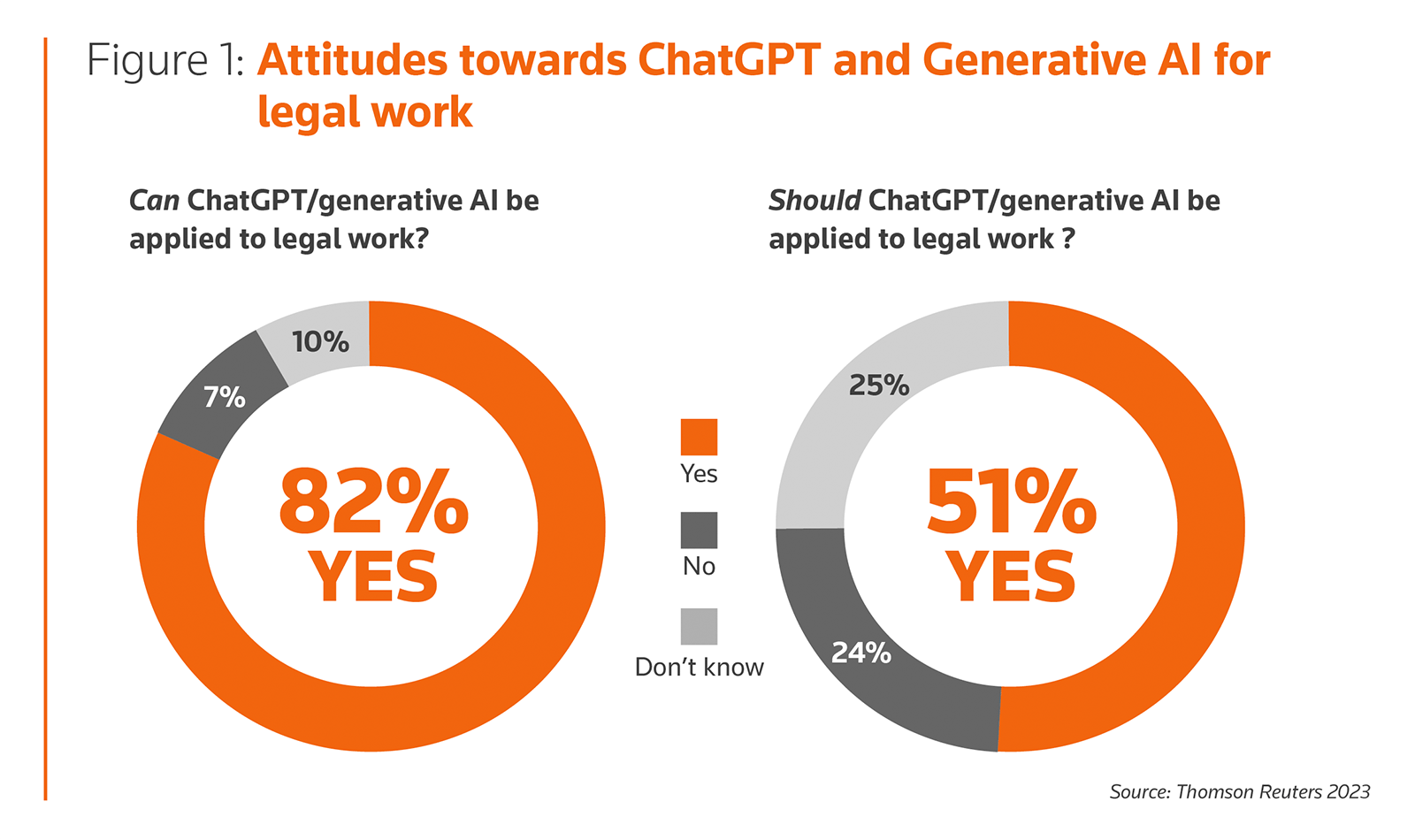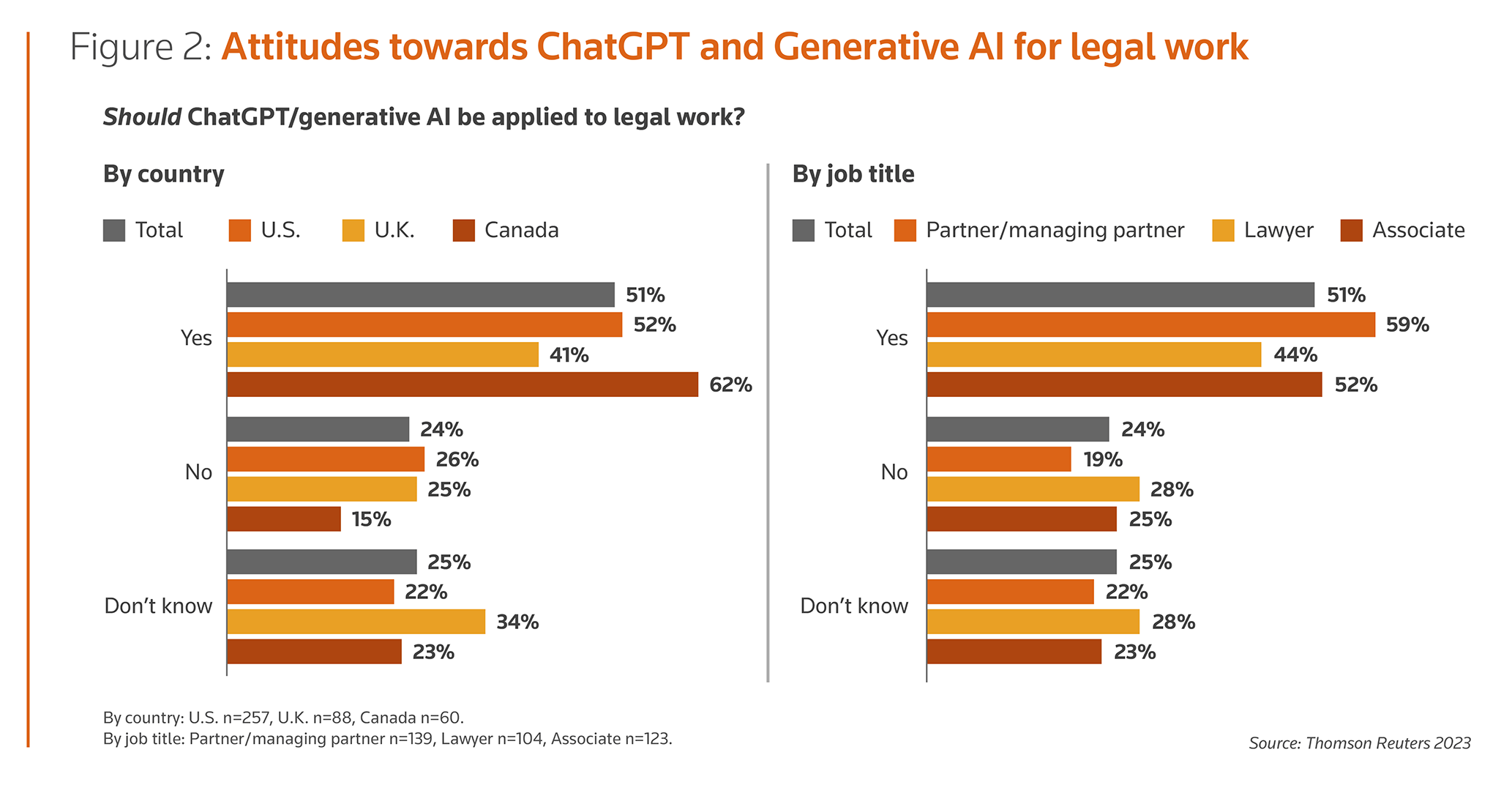It
has
been
a
whirlwind
year
for
the
Open
AI-backed,
generative
AI
legal
tech
startup
Harvey,
which
went
from
a
$5
million
seed
round
in
November
2022
to
a
$21
million
Series
A
in
April
2023
to
an
$80
million
Series
B
in
December
2023
at
a
valuation
of
$715
million.
It
was
a
year
that
included
some
big
wins,
including
the
decision
in
February
2023
by
Allen
&
Overy,
one
of
the
world’s
largest
law
firms,
to
integrate
Harvey
into
its
global
practice,
where
it
could
be
used
by
the
firm’s
more
than
3,500
lawyers
across
43
offices
operating
in
multiple
languages.
Just
a
month
after
that,
Harvey
and
PwC
announced
a
global
partnership
to
give
PwC’s
Legal
Business
Solutions
professionals
exclusive
access
among
the
Big
4
to
Harvey’s
AI
platform.
More
recently,
in
what
they
described
as
a
“significant
step
beyond
the
exclusivity
agreement,”
Harvey
and
PWC
announced
a
strategic
alliance,
that
also
included
Harvey
investor
OpenAI,
to
train
and
deploy
foundation
models
for
tax,
legal
and
human
resources.
In
September,
another
major
firm,
Macfarlanes,
announced
that
it
would
roll
out
Harvey
firmwide,
after
an
initial
pilot
program,
and
last
month,
Forbes
named
Harvey
to
its
AI
50,
recognizing
the
most
promising
privately-held
AI
companies
–
the
only
legal-specific
AI
on
the
list.
But
even
with
such
dramatic
traction
for
a
company
that
is
still
less
than
two
years
old,
there
has
remained
an
air
of
mystery
around
Harvey.
The
product
continues
to
be
in
an
early-access
phase;
few,
other
than
select
early-access
customers,
have
seen
the
Harvey
product;
and
the
company’s
founders,
Winston
Weinberg,
its
CEO,
and
Gabriel
Pereyra,
its
president,
have
given
few
media
interviews.
But
that
is
about
to
change,
the
two
founders
told
me
in
an
interview
earlier
this
week.
They
will
be
coming
out
of
the
early-access
phase
during
the
third
quarter
of
the
year
and
launching
versions
that
they
say
will
be
more
affordable
to
firms
of
various
sizes,
depending
on
their
needs.
They
also
say
that
they
will
be
showing
the
product
more
often,
attending
more
industry
conferences,
and
speaking
more
often
with
the
press.
From
Custom
to
Commercial
Part
of
the
reason
they
have
been
so
stealthy,
Weinberg
and
Pereyra
say,
is
that
they
have
been
nose-to-the-grindstone
building
highly
customized
models
for
the
large
law
firms
they
serve.
Customization
of
its
AI
model
has
been
Harvey’s
trademark,
in
a
sense,
and
a
key
differentiator
from
other
popular
legal
AI
products,
most
notably
CoCounsel,
the
AI
legal
assistant
developed
by
Casetext
and
acquired
by
Thomson
Reuters.
Cofounders
Pereyra
and
Weinberg
More
recently,
however,
Harvey
has
been
building
custom
models
and
related
products
that
can
be
sold
commercially
to
multiple
customers.
These
include
the
models
it
is
building
with
PWC
for
tax,
legal
and
human
resources;
new
case
law
research
models
it
is
developing
in
partnership
with
OpenAI;
and
a
new
Vault
product
that
will
allow
customers
to
apply
generative
AI
capabilities
to
large
document
collections.
It
also
recently
launched
its
product
on
the
Microsoft
Azure
Marketplace,
where
it
is
offering
a
Harvey
on
Azure
version
of
its
product.
“Deploying
on
Microsoft
Azure
is
a
key
milestone
for
Harvey,”
Weinberg,
who
is
Harvey’s
CEO,
said
in
announcing
that
launch.
“This
collaboration
allows
us
to
use
Azure’s
robust
cloud
capabilities
to
enhance
Harvey’s
vision,
making
it
more
powerful
and
accessible
for
businesses
across
the
world.”
Later
this
year,
in
a
move
designed
to
make
Harvey
more
accessible
to
a
broader
number
of
lawyers,
it
will
begin
offering
commercial
access
to
some
of
its
products.
It
will
start
with
its
case
law
models,
and
then
begin
offering
bundles
of
its
products.
Customers
will
have
the
option
of
choosing
a
bundle
of
products
that
will
include
its
AI
assistant,
various
case
law
or
specialized
research
models,
its
Vault
for
large
document
collections,
and
custom
models
or
projects.
There
will
also
be
prepackaged
bundles
that
will
be
offered
at
a
discounted
price.
Case
Law
Research
According
to
Weinberg
and
Pereyra,
a
key
step
in
Harvey’s
move
towards
broader
commercial
availability
has
been
its
partnership
with
OpenAI
to
build
custom-trained
caselaw
models.
They
have
already
done
this
for
U.S.
law
and
will
now
be
adding
other
jurisdictions.
In
seeking
to
develop
a
research
solution,
they
found
that
simply
fine-tuning
a
foundation
model
such
as
GPT-4
or
using
retrieval
augmented
generation
(RAG)
was
not
sufficient
to
produce
the
level
of
results
required
for
legal
work.
Instead,
the
case
law
system
they
built
is
a
combination
of
a
large
foundation
model
pre-
and
post-trained
on
all
of
U.S.
case
law
and
a
case
law
search
system
that
the
model
leverages.
It
uses
a
combination
of
legal
specific
data
preprocessing,
hybrid
search,
pre-training,
post-training,
multi-stage
reasoning,
retrieval
and
custom
fine-tuned
embeddings,
and
legal
specific
answer
postprocessing,
Weinberg
said.
“At
a
high
level,
the
system
we’ve
developed
performs
legal
research
much
like
an
associate
would,
taking
a
complex
research
query
and
performing
case
law
searches,
analyzing
the
results
and
eventually
synthesizing
all
the
information
to
provide
an
accurate
result
for
the
users,”
Weinberg
said.
“We’ve
built
a
number
of
legal-specific
solutions
for
the
search
and
answer
system
including
extracting
citation
graphs,
procedural
posture,
and
fact
patterns
from
cases
to
improve
search
and
detecting
case
hallucinations,
inconsistent
arguments,
and
instances
of
weak
case
support
in
answers.”
This
legal
research
model
can
be
used
for
traditional
research
and
will
also
be
able
to
be
used
for
more
complex
workflows,
such
as
cross-jurisdictional
surveys,
brief
drafting,
issue
spotting
in
large
sets
of
discovery
or
investigative
documents,
and
litigation
risk
analysis.
Harvey
also
plans
to
partner
with
government
entities
to
use
these
models
to
advance
access
to
justice
by
making
case
law
more
accessible.
Already,
the
company
has
partnered
with
court
officials
in
Singapore
to
help
pro
se
litigants
in
small
claims
cases
get
answers
to
their
legal
questions
in
order
to
better
understand
their
potential
claims
or
defenses.
PWC
Partnership
Through
its
partnership
with
PwC,
Harvey
is
developing
a
series
of
custom
built
models
focused
on
the
areas
in
which
PwC
has
domain
expertise
–
tax,
legal
and
human
resources.
While
Harvey
provides
the
AI
technology,
PwC
provides
both
the
intellectual
property
and
the
domain
experts
to
fine
tune
and
train
these
models.
As
these
models
are
developed,
Harvey
and
PwC
will
jointly
go
to
market
with
them,
both
selling
them
through
their
own
channels.
These
will
be
sold
a
separate,
standalone
products,
not
part
of
the
bundles
described
above.
Vault
The
Vault
product
is
being
designed
to
enable
customers
to
use
generative
AI
to
explore
large
collections
of
thousands
of
documents,
either
by
asking
natural
language
questions
of
the
documents
(“Ask
Query”)
or
performing
specific
tasks
against
the
set,
such
as
finding
and
summarizing
certain
language
(“Review
Query”).
For
example,
Weinberg
said,
over
a
set
of
1,000
master
service
agreements,
an
Ask
Query
might
be,
“Has
the
company
ever
executed
an
MSA
with
Oracle?”
A
Review
Query
could
be,
“Create
a
chart
showing
me
every
contract
that
has
change-of-control
provisions
and,
for
those
that
do,
tell
me
if
the
contract
allows
for
termination
on
a
change
of
control.”
Custom
Models
for
Large
Firms
Even
as
it
develops
these
new
products
to
makes
its
technology
more
widely
accessible,
Harvey
is
continuing
to
build
products
for
large
law
firms.
Specifically,
it
is
building
a
platform
that
allows
firms
to
securely
train
generative
AI
systems
on
all
their
private
data,
integrate
with
their
existing
legal
tech
software
and
workflows,
and
continuously
learn
from
their
legal
workforce.
“Unfortunately,
it
isn’t
as
simple
as
training
a
single
model
on
all
their
documents,”
Weinberg
said.
“Doing
so
would
result
in
data
leakage.”
“Instead,
we
are
building
a
suite
of
tools
that
allow
law
firms
to
train,
evaluate
and
deploy
generative
AI
systems
that
respect
data
privacy,
ethical
walls,
and
client
privacy
while
still
being
highly
accurate
and
performant,”
he
said.
For
its
largest
partners,
Weinberg
said,
Harvey
is
building
“hyper
specialized”
systems
for
their
most
complex
use
cases.
With
PwC,
for
example,
Harvey
is
building
foundation
models
in
every
tax
jurisdiction
that
can
answer
complex
tax
questions
over
tax
codes
and
legislation
as
well
as
perform
tax
due
diligence
and
more
complex
scenario-based
evaluations,
Weinberg
said.
“This
system
is
integrated
within
PwC’s
broader
tax
practice
and
our
models
leverage
PwC’s
other
third-party
vendors,
their
IP,
and
their
internal
software
solutions
and
can
produce
reports
in
their
historical
format.”
Weinberg
said
that,
given
the
complexity
of
such
a
project,
the
development
cost
could
exceed
$5
million,
“but
we
are
starting
to
find
ways
to
provide
more
affordable
versions
to
our
clients
and
hope
to
do
so
more
as
we
scale.”
Hiring
Loads
of
Lawyers
When
they
founded
Harvey
in
2022,
Weinberg
was
a
former
associate
at
law
firm
O’Melveny
&
Myers
and
Pereyra
was
a
former
research
scientist
at
DeepMind
and
machine
learning
engineer
at
Meta
AI.
When
we
spoke
this
week,
they
said
that
one
of
the
most
interesting
aspects
of
their
growth
over
the
past
year
has
been
learning
to
run
a
company
of
that
scale.
But
they
agreed
that
one
of
the
aspects
they
are
most
proud
of
is
their
hiring,
which
has
been
primarily
of
engineers
and
lawyers.
In
fact,
of
the
company’s
120
employees
today,
almost
half
are
lawyers
–
many
of
them
lawyers
with
big
firm
or
corporate
pedigrees
–
who
have
been
brought
on
as
domain
experts.
While
it
is
not
unusual
for
a
legal
tech
startup
to
hire
lawyers,
it
is
typically
for
either
a
non-lawyer
role
as
a
product
manager
or
salesperson,
or
it
is
for
a
lawyer
role
as
an
inhouse
counsel.
But
Weinberg
said
that
most
of
Harvey’s
lawyers
are
working
in
research
roles
–
not
to
research
the
law,
but
to
research
lawyers’
workflows
and
processes
around
specific
tasks.
“They’re
saying,
‘How
would
I
have
done
this
task
when
I
was
at
Latham
or
I
was
at
Kirkland?
How
did
I
do
disclosure
schedules?
How
did
I
do
case
law
research?
How
did
I
do
complex
summarization?
How
did
I
draft
a
brief?’
They’re
taking
all
of
those
tasks
and
then
mapping
them
onto
AI.”
Weinberg
and
Pereyra
talk
about
this
as
“process
data”
–
the
process
by
which
a
lawyer
performs
a
task.
When
a
lawyer
sees
a
case
for
the
first
time,
or
a
merger
agreement,
or
an
NDA,
the
lawyer
has
a
process
for
analyzing
that
document.
That
is
the
kind
of
data
they
want
to
build
into
Harvey,
and
why
they
are
hiring
so
many
lawyers.
“Lawyers
have
to
be
trained
for
many
years
to
do
this,
and
that
data
–
that
process
data
–
isn’t
publicly
available
anywhere,”
Weinberg
said.
“The
thing
that’s
very
important
is
how
you
train
the
AI,
and
you
need
a
combination
of
domain
experts
and
AI
engineers,”
Weinberg
said.
“I
think
that
there
aren’t
tons
of
companies
that
are
doing
that
at
the
application
layer
in
any
vertical
right
now
–
I
think
the
thing
that’s
missing
in
a
lot
of
these
companies
is
the
domain
experts.”
But
while
much
of
the
focus
so
far
of
these
lawyers
on
its
staff
has
been
on
building
custom
models
for
large
firms,
Weinberg
and
Pereyra
said
they
wanted
to
expand
access
to
their
technology,
which
is
the
reason
for
the
new
products
they
will
be
launching
in
the
third
quarter.
“A
lot
of
the
firms
out
there,
they
can’t
afford
to
do
these
large,
massive
customizations,”
Weinberg
said,
“so
let’s
build
things
for
them
that
they
can
also
use
and
that
are
great
as
well.”
That
commercialization
will
be
rolled
out
in
stages,
beginning
with
the
case
law
models
and
the
Vault
product.
Next
will
come
the
generally
available
bundles
of
products.
Towards
the
end
of
this
year
or
early
next
year,
they
will
introduce
a
self-service
model.
Of
course,
all
the
while,
they
will
continue
to
offer
customizations
for
large
enterprise
customers.
A
question
I
hear
often
is
how
Harvey
compares
to
CoCounsel,
the
Thomson
Reuters
legal
AI
assistant,
and
so
I
put
that
question
to
Weinberg
and
Pereyra.
There
are
two
main
differences,
they
said.
One
is
the
customization
they
are
doing
for
larger
law
firms,
something
that
TR
does
not
offer
with
CoCounsel.
The
other
is
the
approach
they
are
taking
to
building
their
product.
On
the
backend,
they
have
trained
multiple
models
for
specific
tasks
and
then,
effectively,
chained
them
together,
so
there
is
a
model
for
clause
extraction
and
a
different
model
to
handle
a
specific
type
of
query.
“It’s
actually
similar
to
how
a
law
firm
works,
where
you
have
a
request
from
the
client
and
then
the
partner
breaks
that
request
into
ten
other
requests
and
sends
it
to
a
specialized
person
who
does
that
task,
and
then
they
all
combine
those
together,”
Weinberg
said.
“That’s
what’s
happening
on
the
back
end.”
Commitment
to
A2J
I
mentioned
above
Harvey’s
partnership
with
the
courts
in
Singapore
to
assist
pro
se
litigants
there,
and
Weinberg
and
Pereyra
say
they
are
committed
to
serving
access
to
justice
on
an
even
broader
scale.
They
said
they
will
give
their
product
for
free
to
court
systems
or
A2J
organizations.
“This
is
something
we
want
to
do
a
lot
more
and
in
the
U.S.
too,
to
build
these
systems
and
then
give
them
to
the
court
for
free.”
 Chris
Chris















